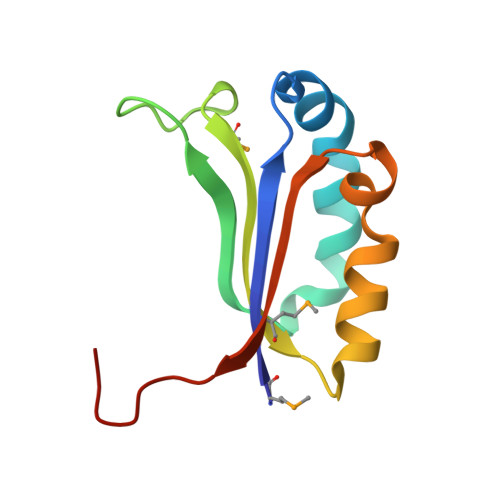Catalytic Mechanism of 5-Chlorohydroxyhydroquinone Dehydrochlorinase from the YCII Superfamily of Largely Unknown Function.
Hayes, R.P., Lewis, K.M., Xun, L., Kang, C.(2013) J Biol Chem 288: 28447-28456
- PubMed: 23955343
- DOI: https://doi.org/10.1074/jbc.M113.499368
- Primary Citation of Related Structures:
4LBH, 4LBI, 4LBP - PubMed Abstract:
TftG, 5-chloro-2-hydroxyhydroquinone (5-CHQ) dehydrochlorinase, is involved in the biodegradation of 2,4,5-trichlorophenoxyacetate by Burkholderia phenoliruptrix AC1100. It belongs to the YCII superfamily, a group of proteins with largely unknown function. In this work, we utilized structural and functional studies, including the apo-form and 2,5-dihydroxybenzoquinone binary complex crystal structures, computational analysis, and site-directed mutagenesis, to determine the dehydrochlorination mechanism. The His-Asp dyad, which initiates catalysis, is strongly conserved in YCII-like proteins. In addition, other catalytically important residues such as Pro-76, which orients the His-Asp catalytic dyad; Arg-17 and Ser-56, which form an oxyanion hole; and Asp-9, which stabilizes the oxyanion hole, are among the most highly conserved residues across the YCII superfamily members. The comprehensive characterization of TftG helps not only for identifying effective mechanisms for chloroaromatic dechlorination but also for understanding the functions of YCII superfamily members, which we propose to be lyases.
Organizational Affiliation:
From the Department of Chemistry and.
















